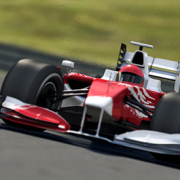F1 Racing Details a Real-Life Example of the IIoT
During an F1 race sensors in the car constantly communicate with the track, the pit crew, a team of engineers and the onsite broadcast crew. The immense volume of real-time data is put into predictive intelligence models and used for race strategy and car servicing. Data analysis and two-way communication happen simultaneously to create a competitive edge that can turn a losing car into a winner.
In many ways, the factory floor or industrial facility is like an F1 race car. Hundreds of sensors and machines generate more and more data. If you could input this data to the right decision-makers in a timely and easily decipherable way, how could your business be transformed? Could you improve reliability, efficiency, safety and production?
Some F1 teams are already transferring their knowledge to other industries. For example, Conoco Philips is testing this approach on oil rigs with assistance from the British automaker McLaren.
Five Ways to Move Forward on the IIoT
The Industrial Internet of Things (IIoT) enables the connectivity that allows businesses to gather greater insights and make data-driven decisions to achieve greater results. Though we don’t know all the applications that our businesses will build on the IIoT, there are two things we do know for certain:
- More and more devices will connect to our industrial networks.
- More and more data will cross the network to feed business applications and provide finer-grained control.
Read full article






Leave a Reply
Want to join the discussion?Feel free to contribute!